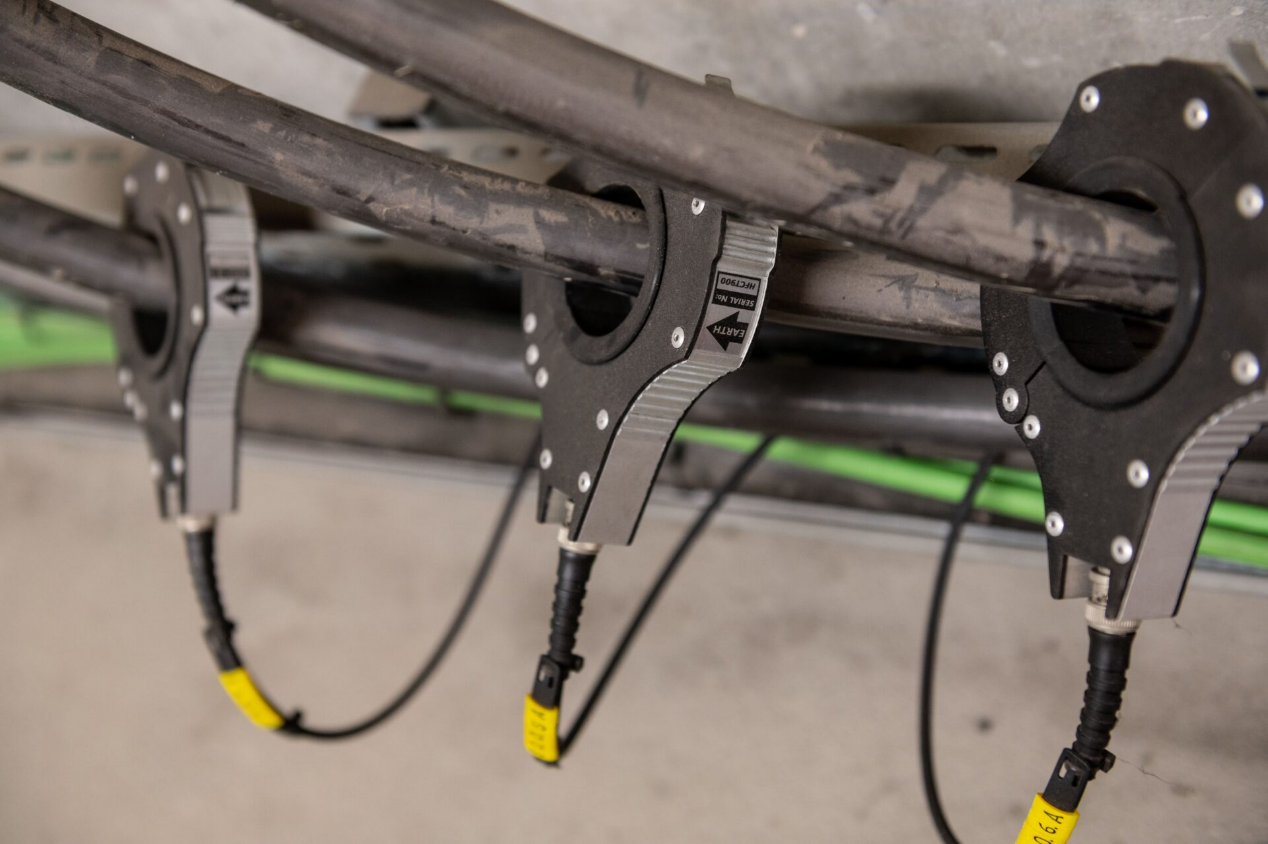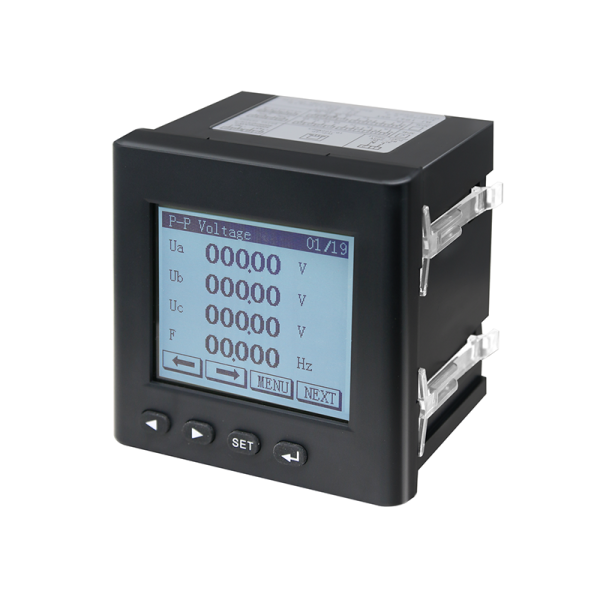MCB vs. MCCB Definition:
MCB (Miniature Circuit Breaker): is a small circuit breaker mainly used for circuit protection in low current range. It is usually designed to be compact, lightweight, and suitable for branch circuit protection.MCCB (Molded Case Circuit Breaker): is a formed case circuit breaker that is larger and capable of handling higher currents. It is commonly used in power distribution systems with more powerful performance and a wider range of applications.

1. Rated current:
MCB: The current rating of MCB is usually between tens to hundreds of amps. It is suitable for small-scale circuits such as branch circuits in homes, commercial buildings and light industry.
MCCB: MCCBs are available in a wider range of current ratings, from a few hundred amps to several thousand amps. This makes it suitable for the protection needs of larger power and more complex circuits, such as main circuits in power stations, industrial equipment, and commercial buildings.
2. Short circuit time and rated short circuit current:
MCB: MCB has a relatively short short circuit time and is suitable for small-scale circuits. It has a low short circuit current rating and is suitable for low-power systems.
MCCB: MCCB has a longer short-circuit time and is therefore able to handle short-circuit situations in larger circuits. It has a higher short circuit current rating and is suitable for higher power systems.
3. Remote operation:
MCB: MCB usually does not have remote operation capabilities and is more suitable for smaller-scale systems that do not require remote control.
MCCB: MCCB usually has remote operation and monitoring capabilities, making it more suitable for large-scale systems that require remote power management.
4. Breaking current rating:
MCBs have lower breaking current ratings: MCBs generally have relatively low breaking current ratings and are suitable for small-scale circuits and low-power loads. This is because MCBs are primarily designed for use in residential buildings, commercial buildings, and light industry, where current levels are lower.
Since MCBs have lower breaking current ratings, they are more suitable for protection of small-scale circuits such as small household appliances, lighting and sockets.
MCCBs have higher breaking current ratings and can handle higher power circuits. They are designed to be more robust and suitable for a wider range of power systems. They are commonly used in applications that need to handle high power, such as large industrial equipment, power stations, and large commercial buildings.
5. Number of poles:
MCBs typically have lower pole count options including unipolar, bipolar and triple pole. This applies to small scale circuits and single/three phase systems. Because MCB is designed with a focus on small circuits and light industrial applications, its simpler pole count configuration makes it suitable for use in homes, commercial buildings, and light industrial environments.
MCCB usually has more pole number options, including single-pole, bipolar, three-pole, four-pole, six-pole and other configurations. This flexibility allows MCCB to adapt to more complex circuit layouts. Since MCCB is designed with a wider range of power needs in mind, its multi-pole configuration makes it suitable for complex power systems such as industries, power stations and large commercial buildings.
6. Trip circuit:
MCB (Mini Circuit Breaker):
Thermal release and magnetic field release mechanism: MCB usually uses a combination of heat release and magnetic field release as the tripping mechanism. Thermal release is responsible for the response to slow faults, while magnetic release is responsible for transient, high-current faults.
Simplified tripping characteristics: The tripping characteristics of MCB are relatively simplified, mainly to meet the needs of domestic and commercial applications. Usually have fixed thermal release and magnetic field release thresholds.
MCCB (molded case circuit breaker):
Thermal magnetic or electronic tripping mechanism: MCCB can adopt thermal magnetic or electronic tripping mechanism. Thermomagnetic mechanisms combine the release of heat and magnetic fields, while electronic mechanisms utilize electronic components for greater precision and flexibility.
Finely adjusted tripping characteristics: The tripping characteristics of MCCB can usually be more finely adjusted to meet the needs of different application scenarios. This makes them more suitable for industrial and large commercial circuits, where more customization and precision control are required.
Suitable for complex circuit environments: Since MCCB is often used in industrial and large commercial circuits, the design of its tripping mechanism is more complex to cope with more complex circuit environments and fault conditions.
Instantaneous, short and long delay options: MCCB usually provides instantaneous, short and long delay tripping options to meet the needs of different fault types. This provides users with greater flexibility.
7. Applications

MCB (Mini Circuit Breaker):
Low-Power Applications: MCBs are primarily designed for low-power applications such as homes, small commercial buildings, and light industry. They are suitable for scenarios with relatively low current protection requirements.
Small-scale circuit protection: MCB is suitable for small-scale circuit protection, including lighting, sockets, small household appliances, etc. Its design focuses on compactness and lightness, making it suitable for circuit boards with limited space.
Affordable: Due to their use in relatively simple applications, MCBs are generally lower cost and are an affordable option.
Simple household electrical systems: MCB is widely used in simple household electrical systems to protect small-scale circuits.
MCCB (molded case circuit breaker)
High Power and Industrial Applications: MCCB is suitable for higher power applications such as industrial machinery, large commercial buildings and power stations. They have greater capacity and can handle higher currents.
Large-scale circuit protection: MCCB is used for large-scale circuit protection, including the protection of main circuits. It is designed to account for a wider range of power requirements and can accommodate more complex circuit configurations.
Customized circuit systems: Because MCCBs provide more configuration options and customization, they are often used in scenarios that require customized circuit systems to meet complex power system requirements.
Highly Adjustable: MCCBs typically have higher adjustability, allowing for finer settings based on the specific characteristics of the circuit, including adjustments to tripping characteristics and current ratings.
Complex industrial electrical systems: MCCBs play a key role in complex industrial electrical systems, providing flexible protection for a variety of power needs.
By gaining an in-depth understanding of the differences between MCB and MCCB in their application areas, users can better make informed choices based on their specific needs and ensure optimal current protection and safety for their systems.






